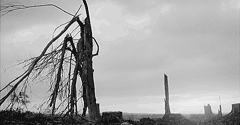Abstract
The military events in Sonora, Mexico involving Yaquis during the last quarter of the nineteenth century seemed to most Mexicans at the time as necessary forcible measures for civilizing a recalcitrant, semi-savage people and resolving the Yaqui “problem”. On the morning of June 8, 1902, more than 124 men, women, and children were massacred by troops under the command of General Luis Torres in the Ubalam Valley of the Sierra Mazatan mountain range in Sonora, Mexico. Three weeks after the massacre of the Yaqui at Sierra Mazatan, Aleš Hrdlička, the father of Physical Anthropology and the founder of the American Association of Physical Anthropologists, traveled to the Yaqui massacre site and collected the heads of twelve individuals along with some miscellaneous human bones and artifacts and brought them back to the American Museum of Natural History (AMNH) in New York City. The structural violence inherent in the oppressive Mexican policies towards the Yaqui can help us understand how the heads of twelve men came to sit on the shelves of the American Museum of Natural History.
Recommended Citation
Perez, Ventura R.
(2010)
"From the Singing Tree to the Hanging Tree: Structural Violence and Death within the Yaqui Landscape,"
Landscapes of Violence: Vol. 1:
No.
1, Article 9.
Available at:
https://scholarworks.umass.edu/lov/vol1/iss1/9
